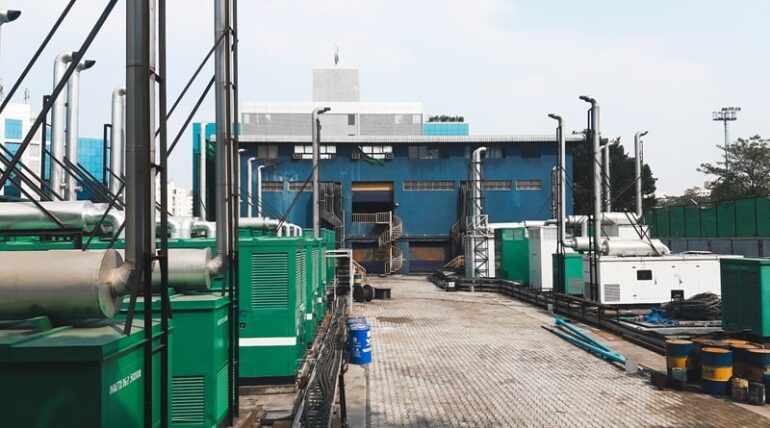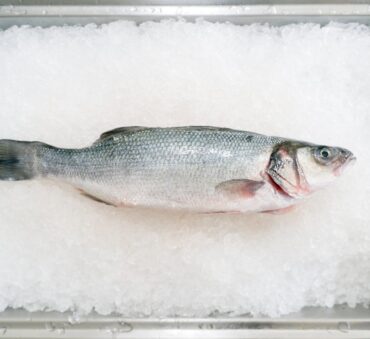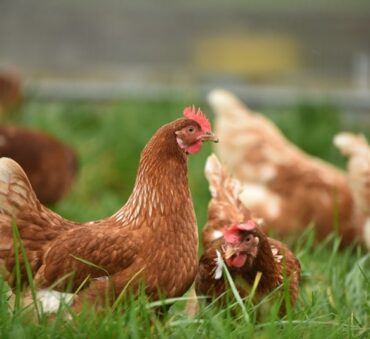Food waste statistics indicate that globally, about one-third of all food produced is wasted, translating to about 1.3 billion tons annually.
As the food industry grapples with mounting food waste, a critical question arises: How can we turn this challenge into an opportunity?
Converting food waste to energy is one possible solution.
This innovative approach not only addresses the alarming issue of food waste but also taps into a sustainable source of energy.
Let’s explore how food waste is converted to energy, the technologies behind the process, and its benefits.
Key Takeaways
- Cutting-edge technologies like anaerobic digestion and thermal conversion are pivotal in transforming food waste into sustainable energy sources.
- Food waste converted to energy offers multifaceted benefits, including significant environmental impact reduction and enhanced resource efficiency.
- Ongoing advancements in food waste to biogas conversion are elevating the efficiency and scalability of these systems, promising a future of more sustainable energy solutions
- For businesses looking to adopt food waste to energy solutions, strategic planning, collaboration with waste management experts, and complying with regulatory policies are key to successful implementation.
Exploring Food Waste to Energy Conversion
The conversion of food waste to energy involves treating organic waste (primarily food scraps) through processes like anaerobic digestion or incineration, transforming it into usable forms of energy.
This innovative approach not only provides a renewable energy source but also significantly reduces the environmental impact of food waste by diverting it from landfills.
The best part?
This method uniquely addresses both waste management and renewable energy production, offering a sustainable, eco-friendly solution to two of our era’s pressing challenges.
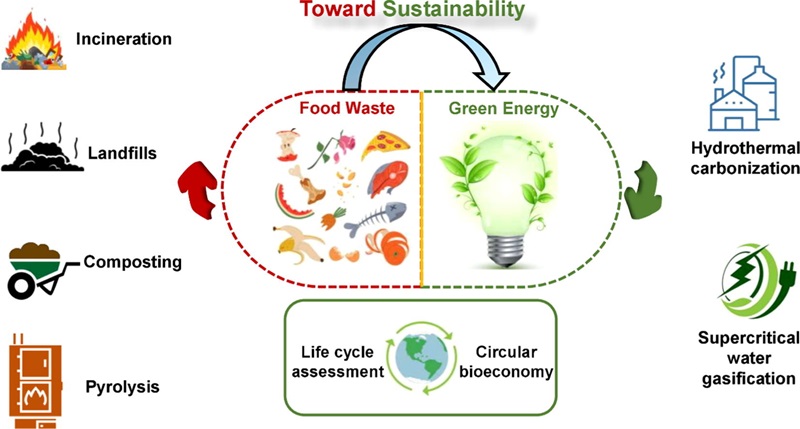
Technologies Enabling Food Waste to Energy
Innovations in food technology advancement and trend are revolutionizing the energy sector.
Key processes like anaerobic digestion and biofuel production from food waste are at the forefront. Let’s explore how to turn food waste into energy:
From Food Waste to Electricity and Biofuel
Food waste upcycling is an innovative resource utilization method that allows businesses to convert their food waste to valuable resources.
But how to convert food waste into energy?
Here are the key processes facilitating this transformation:
- Anaerobic digestion: This process is usually conducted in an anaerobic digester system that uses waste food and breaks it down in an oxygen-free environment. It produces biogas, which can be used directly as biofuel or converted into electricity.
- Thermal conversion (pyrolysis and gasification): These technologies involve heating waste to high temperatures. The process converts food waste into syngas, a source of electricity and heat.
- Hydrothermal liquefaction: Initially, food waste is ‘pressure cooked’ to create a crude biofuel liquid. The residue is then broken down into methane, useful for generating electricity and heat.
Anaerobic Digestion: Transforming Food Waste into Biogas
The process of converting food waste into energy through anaerobic digestion comprises several essential stages to energy involves a few crucial steps, including:
- Collection of organic waste: The process begins with the collection of food waste, which includes everything from restaurant scraps to household food leftovers.
- Breakdown in an anaerobic environment: The collected waste is placed in a sealed, oxygen-free tank. In this controlled environment, microorganisms begin to break down organic material.
- Production of biogas: As the waste decomposes, it releases biogas, a mixture primarily composed of methane and carbon dioxide. This biogas can be captured and used as a renewable energy source.
- Conversion to electricity or heat: The biogas can be burned directly for heating purposes or used to power generators, producing electricity.
- Other byproducts: post-digestion, the remaining material, often referred to as digestate, is rich in nutrients and can be used as a fertilizer, completing the sustainable cycle.
Turning food waste into biofuel not only aids in reducing landfill waste but also plays a crucial role in biogas generation, showcasing a sustainable pathway for waste management and energy production.
Benefits of Converting Food Waste to Energy
Transforming food waste into energy is an innovative solution that brings multiple benefits like:
Environmental Impacts: Reducing Landfill Waste and Methane Emissions
Converting food waste to energy reduces the amount of food waste in landfills.
The less food waste in landfills, the less methane is released into the atmosphere.
As methane is a potent greenhouse gas, diverting food waste from landfills helps reduce harmful emissions as well. For context, the environmental impact of food waste in the U.S. is startling – equivalent to the greenhouse gas emissions of about 37 million cars.
Other environmental benefits are:
- Water and energy conservation: Reducing food waste also reduces the amount of water and energy needed to produce the food.
- Nitrogen pollution: Food waste contributes to nitrogen pollution, exacerbating issues like algae blooms and dead zones in aquatic ecosystems.
Economic Advantages
Converting food waste into energy isn’t just environmentally sound – it’s economically beneficial too.
In the United States alone, 133 billion pounds of food are wasted annually, equating to lost values of $48 billion in meats and $27 billion in dairy. The conversion of this waste into energy can recuperate some of these losses.
It is a cost-effective alternative to traditional waste disposal methods, providing both businesses and communities with financial incentives.
Furthermore, anaerobic digestion facilities can help you turn food waste into a lucrative energy resource. These systems not only reduce landfill costs but also generate income from the sale of biofuel.
The Future of Food Waste to Energy Concept
The future of the food waste to energy concept is filled with lots of exciting advancements, significant growth, and untapped potential.
Let’s delve into these innovative prospects, exploring how they could redefine our approach to both waste management and energy production in the years to come.
Advancements in Food Waste to Biogas Conversion
Cutting-edge research and technological advancements are revolutionizing the way we transform organic waste into renewable energy.
From enhanced anaerobic digestion techniques that speed up the conversion process to novel bioreactor designs increasing biogas yield, the field is evolving rapidly.
These developments are not only making the process more efficient but are also expanding its applicability, promising a future where food waste to energy systems can be implemented on a larger scale. This ongoing progress in biogas conversion technology marks a pivotal step towards a more sustainable and energy-secure future.
Scaling Up Sustainable Food Waste-to-Energy Systems
The key to unlocking the full potential of these sustainable energy solutions lies in a multifaceted approach.
This requires a collaborative effort from stakeholders at all levels – from policymakers creating conducive environments for innovation, to businesses adopting and investing in these technologies, and communities embracing new ways of waste disposal.
Together, these efforts can propel food waste-to-energy systems from niche applications to mainstream solutions.
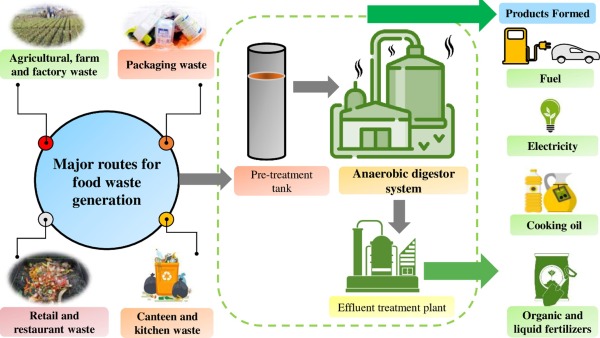
Implementing Food Waste to Energy in Business
Businesses seeking to integrate food waste to energy solutions can follow these practical steps, ensuring a seamless transition into more sustainable practices.
- Understanding the process: Familiarize yourself with how food waste is converted into energy. This could be through anaerobic digestion, which produces biogas from food waste, or thermal processes that produce electricity.
- Collaboration is key: Partner with food waste management companies or local authorities who have the expertise and infrastructure for food waste recycling. These collaborations can offer guidance and resources for efficient waste management.
- Learning from examples: Take inspiration from successful models, like California’s mandatory residential food waste recycling program. This program turns food waste into compost or energy, significantly reducing landfill use and methane emissions.
- Infrastructure and education: Invest in necessary infrastructure like waste bins and ensure staff are educated about new waste disposal methods. Understand that introducing these changes may require initial investments, but they lead to long-term savings and environmental benefits.
- Compliance with regulations: Stay informed about local laws regarding food waste disposal. For example, California’s legislation aims to reduce methane emissions by cutting down food waste in landfills, a move echoed in other regions as well.
Converting food waste to energy is more than just a waste management solution – it’s a step towards a sustainable future. By transforming leftover food into renewable energy, businesses can significantly reduce their environmental footprint while tapping into a cost-effective energy source.
Conclusion
In this journey, partnering with experts like Shapiro can be a game-changer. With our specialized expertise in food waste management, we offer invaluable support in navigating the complexities of food waste to energy conversion.
Ready to collaborate with us and turn your food waste into a valuable resource?
Contact us today to learn more about our services.
Food Waste to Energy: FAQs
Got any other questions about turning food waste into energy? Here are the answers to some common questions:
Food waste can be transformed into various forms of renewable energy, including: Biogas, Biofuel, Electricity.
Yes, food waste can be burned for energy, primarily through incineration that converts it to heat or electricity. However, there are other more sustainable methods like anaerobic digestion.
Most organic food waste (like fruit and vegetable scraps, grains, and even used cooking oils) can be converted into biofuel through fermentation and anaerobic digestion.
Yes, through anaerobic digestion, food waste can be converted into methane. In this process, microorganisms break down organic matter in an oxygen-free environment, releasing methane as a byproduct.
Anaerobic digestion is considered a clean process as it converts waste into renewable energy. This produces much less greenhouse gas emissions compared to traditional waste disposal methods.
The time to convert food waste into energy varies based on the method used. For example, anaerobic digestion can take anywhere from a few days to a few weeks, while thermal processes like incineration are almost instantaneous.
Anaerobic digestion typically takes between 15 to 40 days (about 1 and a half months), depending on the nature of the organic material and the conditions within the digester.
The future of food waste lies in innovative waste-to-energy technologies and sustainable practices. With ongoing advancements, food waste can be used on a bigger scale to produce electricity, contributing to a circular economy and reduced environmental impact.
Baily Ramsey, an accomplished marketing specialist, brings a unique blend of anthropological insight and marketing finesse to the digital landscape. Specializing in educational content creation, she creates content for various industries, with a particular interest in environmental initiatives.
